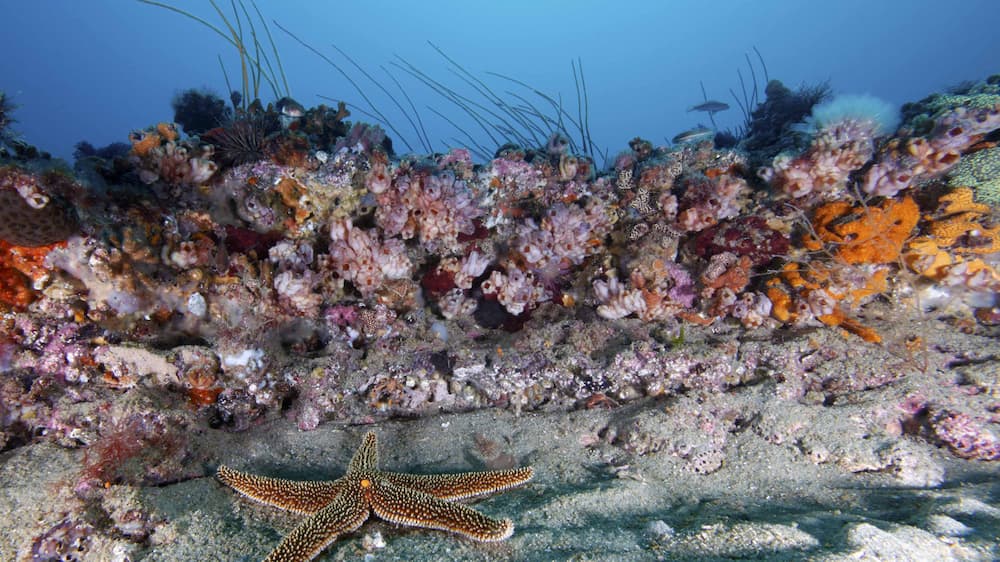Invertebrates

More than 900 species of invertebrates—animals without a backbone—have been identified at Gray's Reef by Sam Gray and others. Invertebrates may lack a spine, but they are the backbone of ocean communities along the coasts of the southeast U.S.
These animals create the base of food webs, break down organic matter, filter seawater, and cycle nutrients. Thousands of invertebrates form a dense carpet that can completely cover the rocky ledges at Gray's Reef, leading to its designation as a "live-bottom" reef.
Creature Feature–Invertebrates
Studying Invertebrates
Dr. Daniel Gleason, director of the Institute for Coastal Plain Science at Georgia Southern University, studies invertebrates and bottom habitats in Gray's Reef. Gleason and his students provide a valuable website resource, Guide to the Benthic Invertebrates and Cryptic Fishes of Gray's Reef, created by Daniel F. Gleason, Alan W. Harvey, and Stephen P. Vives.

